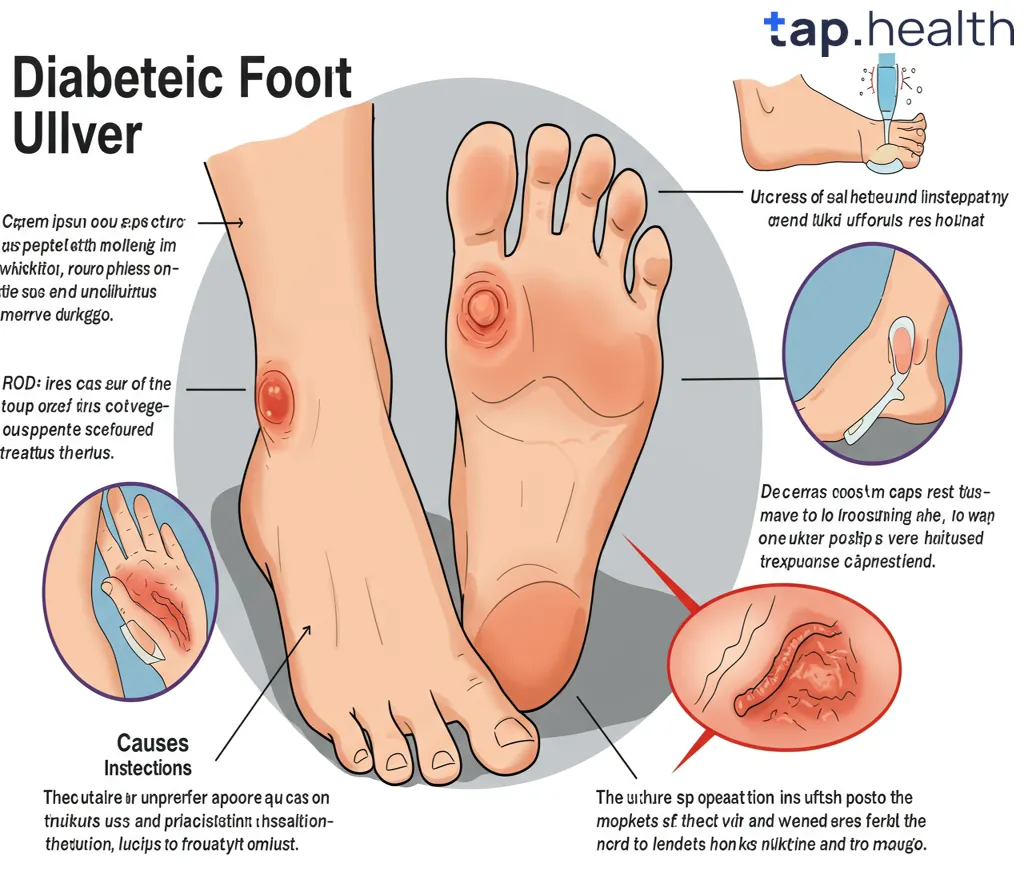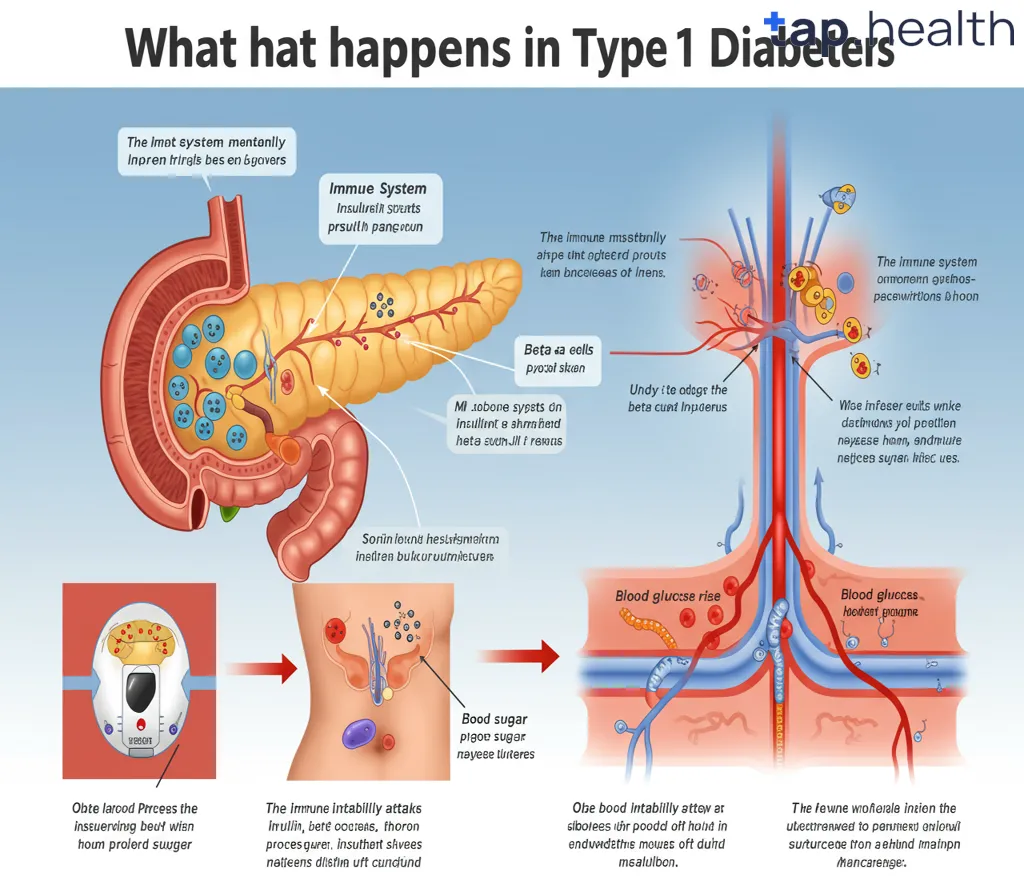Table of Contents
- Whipple’s Disease: Symptoms You Should Know
- Understanding Whipple Disease: Causes & Risk Factors
- Diagnosing Whipple’s Disease: Tests and Procedures
- Effective Treatments for Whipple’s Disease
- Whipple Disease: A Comprehensive Guide
- Frequently Asked Questions
- References
Have you ever heard of Whipple’s disease? It’s a rare and fascinating condition that can affect multiple systems in the body, often going undiagnosed for years. Understanding Whipple’s Disease: Symptoms, Causes, and Diagnosis is crucial for both medical professionals and individuals experiencing unexplained symptoms. This blog post will delve into the complexities of this infectious disease, exploring its telltale signs, the underlying bacterium responsible, and the diagnostic methods used to confirm a diagnosis. We’ll break down the information in an easy-to-understand way, helping you navigate this often-confusing illness. Let’s unravel the mysteries of Whipple’s disease together.
Whipple’s Disease: Symptoms You Should Know
While many associate serious health complications with diabetes, such as the alarming statistic that nearly 15% of diabetics experience foot ulcers in their lifetime, with high amputation risks, it’s crucial to be aware of less common but equally devastating conditions. Whipple’s disease, for example, is a rare bacterial infection that can significantly impact health, especially in individuals residing in tropical and Indian regions. Recognizing the symptoms early is key to effective management.
Early Warning Signs:
Early symptoms of Whipple’s disease are often vague and easily overlooked, making diagnosis challenging. They frequently mimic other illnesses. Common initial presentations include weight loss, arthralgia (joint pain), and fatigue. Intestinal symptoms such as chronic diarrhea, abdominal pain, and malabsorption can also develop. In some cases, patients may experience fever, lymphadenopathy (swollen lymph nodes), and skin rashes. The progression of the disease can lead to more severe complications affecting the central nervous system, resulting in neurological symptoms. Fever, a symptom mentioned here, can also be a significant indicator in conditions like Hyperpyrexia: Causes, Symptoms and Diagnosis, highlighting the importance of comprehensive medical evaluation.
Recognizing the Need for Medical Attention:
Given the non-specific nature of initial symptoms, it’s vital to seek medical attention if you experience persistent weight loss, unexplained fatigue, or chronic digestive problems, particularly if you live in a tropical or Indian country. Early diagnosis and treatment with antibiotics are crucial in preventing long-term complications and improving the prognosis. Don’t delay seeking medical help if you suspect you may have symptoms consistent with Whipple’s disease. Early intervention is key to managing this potentially serious condition. Consult your doctor immediately if you have concerns. Understanding the seriousness of seemingly minor symptoms is crucial; for example, while Whipple’s disease is rare, other respiratory illnesses like those caused by HMPV can also present unexpected challenges. Learn more about the potential severity of HMPV by reading about Is HMPV a Serious Disease?
Understanding Whipple Disease: Causes & Risk Factors
Whipple disease, a rare and serious infection, is caused by the bacterium Tropheryma whipplei. While the exact transmission route remains unclear, it’s believed to be linked to ingestion of contaminated food or water, potentially more prevalent in regions with less stringent sanitation practices, including many Indian and tropical countries. This highlights the importance of robust hygiene standards in preventing infections like Whipple disease.
Risk Factors and Prevalence in Tropical Climates
Several factors may increase an individual’s susceptibility to T. whipplei infection. While not definitively established, compromised immune systems, similar to the increased susceptibility to sleep apnea seen in individuals with diabetes (a 70% increased risk, according to research), may play a significant role. Malnutrition and poor sanitation, common challenges in many tropical and developing regions, potentially contribute to a higher risk of infection. The warmer climates of these regions may also influence the bacterium’s survival and spread.
Geographic Considerations
The prevalence of Whipple disease varies geographically. Although not explicitly linked to specific geographic locations, its occurrence may be more commonly reported in certain areas due to factors mentioned above, including access to healthcare and diagnostic capabilities. Early diagnosis is crucial for effective treatment and improved outcomes. Increased awareness and improved diagnostic facilities in affected regions are crucial steps in managing this potentially devastating disease. It’s important to consult with a healthcare professional for any suspected symptoms. Understanding the impact of underlying conditions, such as those discussed in our article on Stiff Person Syndrome: Symptoms, Causes and Treatment, can be crucial in managing various health issues. Furthermore, the importance of early diagnosis is mirrored in other conditions; consider the implications for Hypospadias: Symptoms, Diagnosis, Treatment and Types.
Diagnosing Whipple’s Disease: Tests and Procedures
Diagnosing Whipple’s disease, a rare multisystem disorder, can be challenging due to its varied and often subtle symptoms. Early diagnosis is crucial for effective treatment, mirroring the importance of early diagnosis in other prevalent conditions like diabetes, where 50% of global cases remain undiagnosed. This highlights the need for increased awareness and improved diagnostic capabilities, particularly in resource-limited settings common in many Indian and tropical countries.
Key Diagnostic Tests
The primary diagnostic method involves identifying the causative agent, *Tropheryma whipplei*, within affected tissues. This typically involves a biopsy of the small intestine, often obtained through endoscopy. The presence of characteristic foamy macrophages containing the bacteria within the intestinal lamina propria is a hallmark of the disease. Other diagnostic tests may include:
* Polymerase chain reaction (PCR): This highly sensitive test detects *T. whipplei* DNA in various bodily fluids, including blood, cerebrospinal fluid, and synovial fluid, enabling broader diagnostic capabilities.
* Serological testing: While not as specific or sensitive as PCR, serological tests may detect antibodies against *T. whipplei*, providing supporting evidence. However, false-negatives are possible, particularly in early stages. Understanding the limitations of serological tests, much like the potential pitfalls in interpreting a Widal test, is crucial for accurate diagnosis.
* Imaging studies: Techniques like MRI and CT scans can help identify characteristic lesions in various organs affected by Whipple’s disease, aiding in diagnosis and assessing disease severity. These are particularly valuable when symptoms manifest in regions beyond the gastrointestinal tract. While Whipple’s disease is rare, it’s important to consider other possibilities, and symptoms can sometimes overlap with those of conditions like pancreatic cancer.
Early and accurate diagnosis is vital for initiating appropriate antimicrobial therapy, improving patient outcomes, and reducing long-term complications. The availability and accessibility of these diagnostic tests may vary significantly across different regions, emphasizing the need for improved healthcare infrastructure and awareness in Indian and tropical countries. If you experience persistent gastrointestinal issues, neurological symptoms, or arthralgia, especially in regions where diagnostic resources are limited, seeking expert medical attention is crucial.
Effective Treatments for Whipple’s Disease
Whipple’s disease, a rare bacterial infection, requires prompt and appropriate treatment to prevent serious complications. Fortunately, with early diagnosis and the right approach, effective management is achievable, even in resource-constrained settings common in many Indian and tropical countries. The cornerstone of Whipple’s disease treatment is long-term antibiotic therapy, typically involving a combination of antibiotics such as ceftriaxone, trimethoprim-sulfamethoxazole, or other suitable regimens determined by a physician. The duration of treatment is crucial and often extends for several months, sometimes even years, to ensure complete eradication of the *Tropheryma whipplei* bacteria.
Managing Symptoms and Improving Quality of Life
While antibiotic therapy addresses the underlying infection, managing the symptoms associated with Whipple’s disease is also vital. This may involve symptomatic relief for issues like diarrhea, weight loss, and arthralgia. Nutritional support is often crucial, given the significant impact the disease can have on nutrient absorption. A balanced diet rich in essential vitamins and minerals is crucial for recovery. In severe cases, hospitalization may be necessary for supportive care and management of complications. Remember that just as lifestyle changes can significantly impact the risk of type 2 diabetes, as suggested by the research indicating that up to 80% of cases can be delayed or prevented through such modifications (lifestyle changes), consistent medical adherence is essential for effective Whipple’s disease treatment.
Regional Considerations and Access to Care
Access to quality healthcare and specialist physicians familiar with Whipple’s disease is paramount. In many Indian and tropical countries, challenges may exist in accessing timely diagnosis and specialized treatment. Early detection through awareness campaigns and improved diagnostic capabilities is crucial to improving outcomes. Collaboration between healthcare providers and community health workers can play a significant role in educating the public about Whipple’s disease and improving access to care in these regions. Proactive consultation with a physician is crucial for any suspected symptoms. Understanding the complexities of treating rare diseases is crucial, and while Whipple’s disease is unique, the challenges faced in managing conditions like Moyamoya Disease highlight the importance of early diagnosis and access to specialized care. Similarly, the need for effective treatment strategies is highlighted by the need for appropriate care in conditions such as HMPV.
Whipple Disease: A Comprehensive Guide
Whipple disease, a rare but serious infection, is caused by the bacterium Tropheryma whipplei. While it can affect various organs, it’s most commonly known for its impact on the gastrointestinal tract. Understanding its symptoms, causes, and diagnosis is crucial for timely intervention, especially in regions like India and other tropical countries where access to advanced diagnostics might be limited.
Symptoms of Whipple Disease
Initial symptoms often mimic other gastrointestinal issues, making diagnosis challenging. These can include chronic diarrhea, weight loss, abdominal pain, and fever. As the disease progresses, more severe symptoms may emerge, such as arthritis, skin discoloration, and neurological problems. It’s noteworthy that diabetic neuropathy, affecting 30-50% of patients, can significantly worsen the condition, causing debilitating pain and reduced mobility. This is especially relevant for populations in India and tropical countries where diabetes prevalence is high.
Causes and Diagnosis
The bacterium T. whipplei is believed to be transmitted through the oral route, possibly through contaminated food or water. Diagnosis involves a combination of methods, including a thorough physical examination, blood tests, and tissue biopsies. Early and accurate diagnosis is key because untreated Whipple disease can be fatal. Access to advanced diagnostic tools, such as PCR testing to detect the bacteria, may be less readily available in some regions of India and other tropical countries. Therefore, increased awareness among healthcare providers is vital.
Seeking Help in India and Tropical Countries
If you suspect you might have Whipple disease, prompt medical attention is crucial. Seek consultation with a gastroenterologist or infectious disease specialist. While access to specialized care may vary across regions, early diagnosis and treatment significantly improve the prognosis. Increased awareness and improved access to diagnostic testing in these regions are paramount for better patient outcomes. Understanding the symptoms and seeking prompt medical care is as important as understanding other infectious diseases; for example, knowing the symptoms of Eye Flu can help prevent its spread. Similarly, understanding the symptoms of other tropical diseases is important. While not directly related to Whipple’s disease, Homeopathic Medicine for Dengue Fever: A Guide highlights the importance of early diagnosis and treatment for other infectious diseases prevalent in tropical areas.
Frequently Asked Questions
Q1. What is Whipple’s disease?
Whipple’s disease is a rare bacterial infection caused by *Tropheryma whipplei*. It mainly affects the gastrointestinal system but can spread to other parts of the body.
Q2. What are the common symptoms of Whipple’s disease?
Symptoms can be vague and similar to other illnesses. Common ones include weight loss, fatigue, joint pain, and diarrhea.
Q3. How is Whipple’s disease diagnosed?
Diagnosis involves identifying the bacteria in tissue samples, usually from the small intestine, through biopsy. PCR testing and serological analysis can also help confirm the diagnosis.
Q4. How is Whipple’s disease treated?
Treatment primarily involves long-term antibiotic therapy. This is often combined with managing symptoms and providing nutritional support.
Q5. What is the importance of early diagnosis and treatment?
Early diagnosis is crucial to prevent serious complications. Access to diagnostic tools and specialized care is particularly important in regions like tropical and Indian areas where the disease is more prevalent.
References
- How patients make sense of a diabetes diagnosis: An application of Weick’s model of organizing: https://www.diabetesresearchclinicalpractice.com/article/S0168-8227(20)30367-3/pdf
- A Practical Guide to Integrated Type 2 Diabetes Care: https://www.hse.ie/eng/services/list/2/primarycare/east-coast-diabetes-service/management-of-type-2-diabetes/diabetes-and-pregnancy/icgp-guide-to-integrated-type-2.pdf




